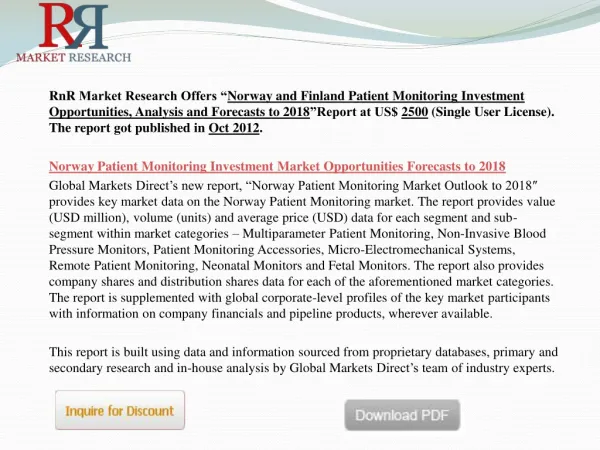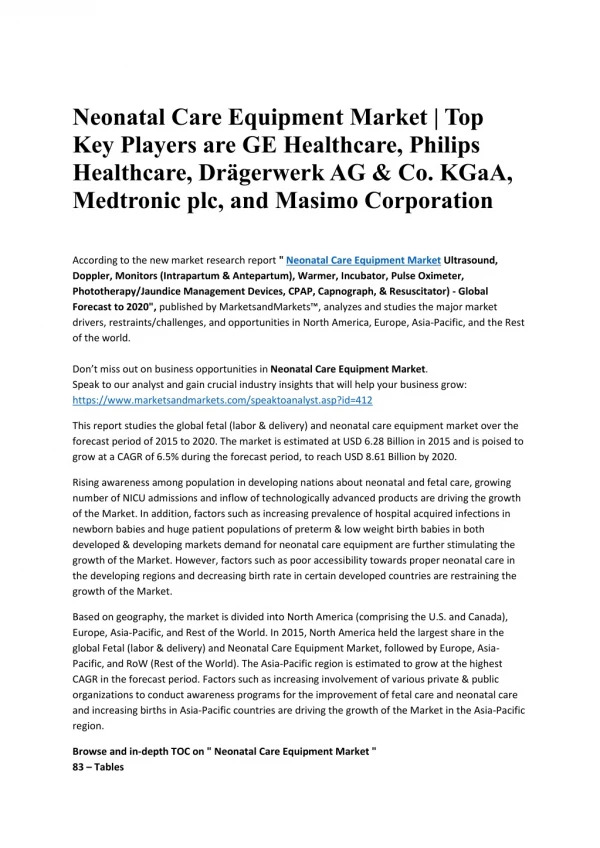Fetal Monitoring Market
The global fetal monitoring market involves different instruments that help in the examination of fetal heart rate, fetal movement, and uterine contractions. This market is driven by several factors such as increasing initiatives by government and non-government bodies for improving maternal/fetal health across the globe, rising company investments in the development of fetal monitors, increasing number of conferences and symposia, and technological advancements. Emerging markets such as India and China have opened an array of opportunities for the growth of this market. However, the high cost of equipment and stringent regulatory procedures are expected to restrain the growth of this market. The fetal monitoring market is expected to reach $2,346.4 million by 2019 from $1,688.7 million in 2014, at a CAGR of 6.8%. This market is segmented based on products, portability, methods, applications, end users, and geography. Based on products, the fetal monitoring market is segmented into instruments and consumables, and software. The instruments and consumables segment includes ultrasound, electronic fetal monitors, fetal electrodes, fetal Doppler, uterine contraction monitors, telemetry solutions, accessories and consumables, and other products. Instruments and consumables accounted for the largest share of the market, primarily due to the increasing rate of maternal mortality and birth defects. In addition, increasing investments by government organizations to improve prenatal care, coupled with technological advancements, will further enhance the growth of this market. Based on portability, the fetal monitoring market is segmented into portable and non-portable systems. The non-portable systems segment accounted for the largest share of the market. Increasing initiatives by companies to develop new and advanced equipment will drive the growth of this market. Based on method, the fetal monitoring market is segmented into invasive and non-invasive methods. The non-invasive segment accounted for the largest share of this market. Growth in this segment can be attributed to the rising awareness of maternal/fetal care and increasing government and non-government initiatives to prevent maternal mortality across the globe. Based on application, the fetal monitoring market is segmented into antepartum and intrapartum. The antepartum segment accounted for the largest share of the market. Rising incidences of congenital anomalies and development of new products by companies will drive the growth of this market. Based on end users, the fetal monitoring market is segmented into hospitals, clinics, and others. The hospitals segment is the major end-user segment in this market. Increasing initiatives by government and non-government organizations to provide improved prenatal care facilities will drive the growth in this segment.
★
★
★
★
★
174 views • 5 slides







